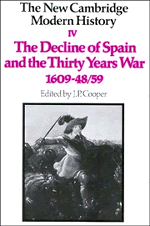Chapter XX - The Ottoman empire 1617–48
from THE FRONTIERS OF EUROPE
Published online by Cambridge University Press: 28 March 2008
Summary
On the death of Sultan Ahmed I in 1617 the problem of the succession to the throne assumed a particular importance. The Ottoman custom had been that the sons of a reigning sultan should be sent out, while still young, to rule over provinces in Asia Minor. A prince thus sent out with the rank of sanjaq begi, that is, governor of a sanjaq or province, would now receive, under the guidance of the dignitaries composing his household and of the officials controlling the local administration, a long and elaborate education in the 'adet-i 'othmaniyye—the mores and the culture distinctive of the Ottomans. It was an education which embraced language and literature, physical training and the practice of arms and which inculcated, moreover, a close and practical knowledge of how the empire was run—in short, an education designed to fit a prince for the responsibilities of rule, if ever he should come to the throne.
At the same time it had been the custom of the Ottomans that a new sultan should order forthwith the execution of all his brothers and their male children. The pressures imposed on princes of the blood through the operation of this ‘law of fratricide’ were acute. Aware that to win the throne or to die was the ultimate choice offered to them, the princes strove with all the means at their command to strengthen their resources in expectation of the evil hour which would mark the death of their father. Each of them sought to create in his particular province a nucleus of armed force and, in addition, to establish at the Porte, amongst the high dignitaries and the troops of the imperial household, a faction committed to this cause.
- Type
- Chapter
- Information
- The New Cambridge Modern History , pp. 620 - 643Publisher: Cambridge University PressPrint publication year: 1970

